| New York
Architecture Images- Recent New Mets Stadium (CitiField) |
|
| Please note- I do not own the copyright for the images on this page. | |
|
architect |
HOK Sport |
|
location |
|
|
date |
|
|
style |
|
|
type |
Stadium |
|
construction |
Brick facade, steel structure. |
 |
|
 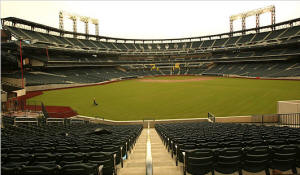 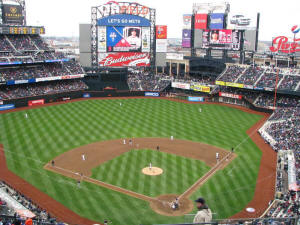 |
|
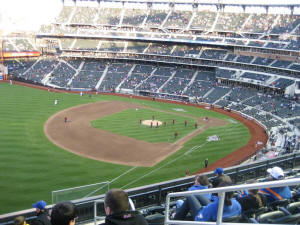 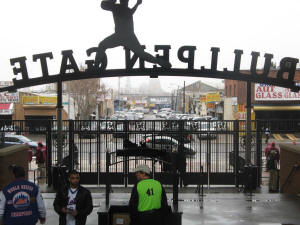 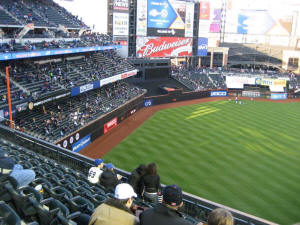 |
|
 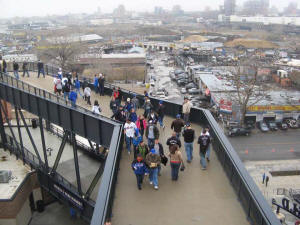  |
|
 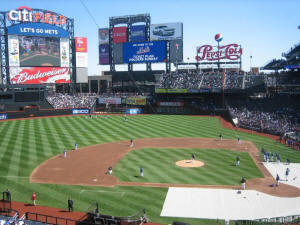  |
|
|
notes |
New Mets Stadium (CitiField) - by HOK Sport Daily News: New Mets stadium plan touted BY MICHAEL SAUL and LISA L. COLANGELO 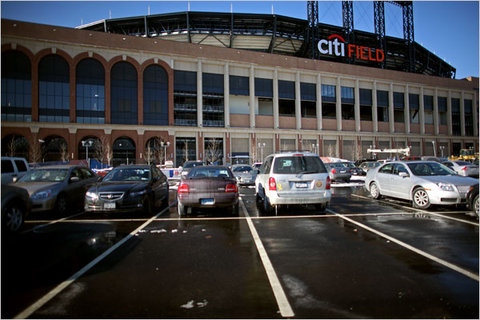 NYC2012 officials released yesterday the first drawings of what a new Mets ballpark could look like - all dressed up for the Olympics. The $600 million stadium, which could be ready for the Mets in 2009, looks like an old-time ballpark, but is outfitted with 80,000 seats and state-of-the-art track-and-field facilities. The new entrances are depicted with old-fashioned awnings, somewhat resembling the drawings the Mets touted in 1998 when they announced plans for a retro ballpark fashioned after Ebbets Field. But planners emphasized the renderings released yesterday could change, and are simply meant to give the International Olympic Committee an idea of how a 45,000-seat ballpark could be transformed into an 80,000-seat Olympic stadium. "We focused on the technical details for the athletic stadium," said NYC2012 planning director Andrew Winters. "Everybody in the stadium has to be able to see the competition." After the Olympics, the extra seats would be removed and installed at Icahn Stadium on Randalls Island.  "This would help fulfill New York's legacy for track and field," said NYC2012 spokesman Laz Benitez. The drawings were made public two weeks after the city announced plans to put the Olympic stadium in Queens amid the nixing of the proposed West Side stadium. The Mets would pay for their ballpark, but the state and city would pay about $100 million of the cost to convert it into an Olympic stadium. The release of the renderings came as New York officials geared up for a push leading to the selection of the host city July 6 in Singapore. Today, NYC2012, the city's bid committee, plans to release the names of the athletes who will be traveling to Singapore as part of the city's delegation. Tomorrow, Secretary of State Rice will join Mayor Bloomberg and Gov. Pataki to headline a kickoff event at City Hall Park. Deputy Mayor Daniel Doctoroff, the founder of the city's bid, said New York still has a "terrific chance" of beating Paris, London, Madrid and Moscow and hosting the 2012 Games. He said he doesn't believe the city's stumble over an Olympic stadium - with the sudden transfer from Manhattan to Queens - will prove fatal. "It all happened so quickly, people's heads are spinning a little bit," Doctoroff conceded. "But I think the overriding impression that people have had is, 'Wow, if they can do this in three days, imagine what they could do in seven years.'"  Empire State Development News- FOR RELEASE: IMMEDIATE 1/18/2006 CHAIRMAN GARGANO ANNOUNCES ESDC BOARD APPROVAL FOR NEW YANKEE AND SHEA STADIUMS’ INFRASTRUCTURE PLANS Empire State Development Corporation Chairman Charles A. Gargano today announced ESDC Board approval to adopt the General Project Plans for the Yankees and Mets Redevelopment Plans. The plans call for significant infrastructure improvements for the new Mets Stadium, and the construction of new structured parking spaces for the new Yankee Stadium. The Yankees and Mets will privately finance their new facilities with the State contributing to infrastructure upgrades for Shea Stadium, including surface parking; and the construction of new parking facilities for Yankee Stadium. The City will be contributing toward necessary infrastructure improvements at both Shea and Yankee Stadiums, and toward parkland replacement for the Yankee Stadium area. "The State and City are making an economic development investment that not only will assist with the development of new stadiums for the Yankees and Mets, but will result in significant infrastructure improvements for the surrounding communities,” said Empire State Development Chairman Charles A. Gargano. “This smart investment will create thousands of temporary and permanent jobs and yield hundreds of millions of dollars in tax revenue in the coming years. Gov. Pataki thanks the New York Yankees and New York Mets for their commitment to New York and its future.” “We are very appreciative to Charles Gargano and the Empire State Development’s board for their support for this project,” said Randy Levine, president of the New York Yankees. “It’s the largest private investment in the history of sports in the United States and most certainly in the Bronx. This will be a first class destination for Yankee fans, visitors and residents of the Bronx and New York City to enjoy for the next generation.” "We are pleased with The Empire State Development Corporation's approval of our new ballpark development plans, which will be the linchpin of the revitalization of the area surrounding current Shea Stadium," said Jeff Wilpon, COO, New York Mets. "We remain committed to our ongoing dialogue with Borough, City and State officials to build our new, privately-financed ballpark within the property lines of our current facility. We are confident the ballpark will be an entertainment destination and attraction of which Queens and all of New York City and New York State will be proud." The ESDC Directors action does not constitute final approval for the Project. The next step is to seek public hearing and comment for the General Project Plan. After full public comment, the Project will remain subject to final Directors’ approval at a later date.  BACKGROUND- SHEA STADIUM AREA REVITALIZATION PLAN: * An open-air, seven-level stadium with 42,500 seats, and standing room for 1,600 fans, with approximately 50-60 suites * Approximately 1.26 million square feet of space, including food and beverage service facilities, retail space, a corporate business center, function space and facilities for the media, concourses, restaurants, back of the house spaces, players’ facilities, and other amenities; and * 8,800 parking spaces on-site and adjacent to the Project Site. The total project costs are estimated at $600 million. The approximately $444.4 million New Stadium will be financed by tax-exempt and taxable bonds to be issued by the City’s IDA. The City will contribute approximately $85 million in Fiscal 2006 Capital Budget funds for necessary infrastructure improvements and an additional $4.7 million in capital reserve for the new Stadium. ESDC will contribute $70 million for the construction of the infrastructure improvements and $4.7 million in capital reserve for the stadium from bond proceeds. The total infrastructure improvement costs are estimated at $177.2 million. The Mets will be responsible for the construction of the New Stadium and related infrastructure improvements. The Mets will enter into a Non-Relocation Agreement which would require the Mets Team to play its 81 home games at the New Stadium and prohibit the Team from relocating to another city for up to 35 years. Construction will begin by spring of 2006 and be completed by 2009 for the Team’s 2009 Major League Baseball season. The project will generate approximately 3,532 direct construction jobs. The construction fiscal benefit (sales taxes and personal income taxes) is estimated to be $17.1 million for New York City and $26.3 million New York State. Incremental permanent direct employment from stadium operations is estimated to be 453 new direct jobs. A total incremental fiscal benefit from the stadium operations and visitor spending is estimated to be $76.8 million for New York City and $86 million for New York State on a present value basis. This includes sales tax for spending by visitors, sales tax from income spending, personal income tax of direct, indirect and induced jobs plus parking tax and other miscellaneous taxes. 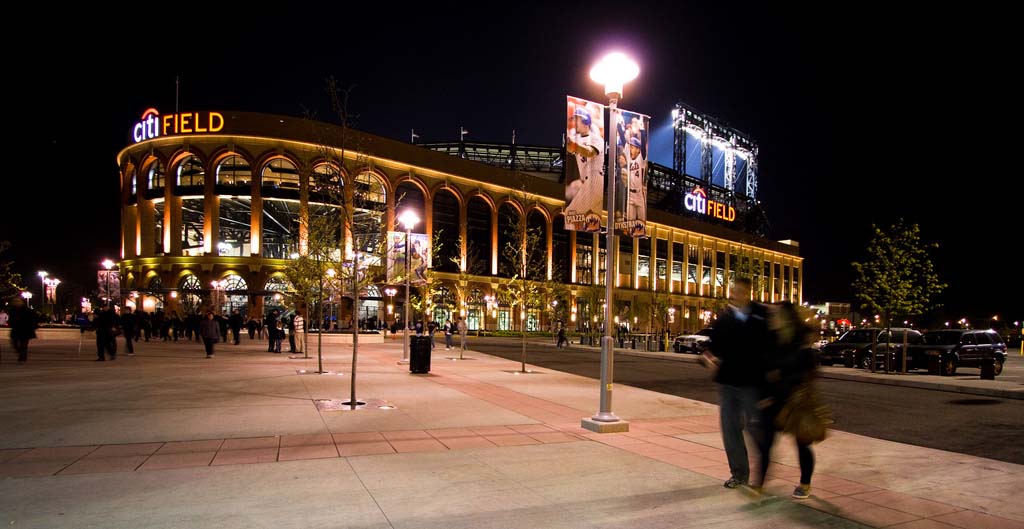 |
|
|
|
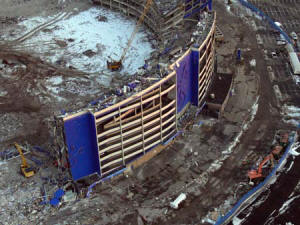   |
|
 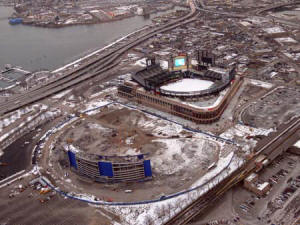 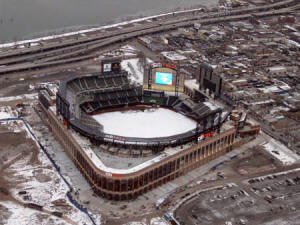 |
|
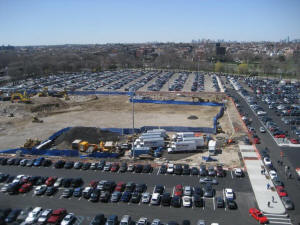 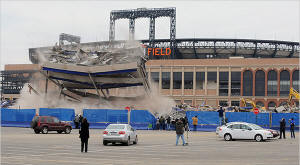  |
|
|
|
The Final Goodbye: Shea Rests in Pieces The last piece of Shea Stadium was brought down on Wednesday morning in Flushing, Queens. By JOSHUA ROBINSON February 18, 2009 Shea Stadium, the site of the Mets’ two World Series victories, their many seasons of futility and a few historic concerts, met the fate of Ebbets Field and the Polo Grounds on Wednesday morning. At 11:21 a.m., a demolition crew pulled down the final section, and what remained of the old blue stadium was gone in a cloud of dust: the final collapse at Shea. It was 45. Besides several months of work by a wrecking crew, what killed the stadium was the need for a sprawling parking lot for the Mets’ gleaming new home, Citi Field. Shea is survived by a team that would prefer to forget its most recent memories of the place, two seasons that ended in mind-boggling failure. From about 9 a.m. on, about three dozen fans gathered around the fences of the demolition site to pay their respects despite a bitter February chill and funereal gray skies over Queens. All they had to look at was the column of ramps that used to lead to the press gate towering over the piles of rubble. Wearing Mets gear, many chronicled the proceedings on video cameras and cellphones. They cheered when the ramps suddenly pitched forward, as if bowing to Citi Field, and started a brief chant of “Let’s go, Mets” as the dust settled. But a few treated it with far more solemnity. Tears were shed, and one fan even crossed himself as he walked away from the fence and into the arms of a loved one. Word of Shea’s agony had spread over a few Mets blogs and even on Shea Stadium’s Wikipedia page. Peter McDonnell brought his 7-year-old son, Jason, and stood for about two hours to watch the 30 seconds it took for the last section to crumble. That moment was originally scheduled for Tuesday. The McDonnells, who attended the final game at Shea and have tickets for opening day at Citi Field, had been there for three hours then. “It’s one last chance to say goodbye and let my son witness history,” McDonnell said. “Maybe someday he’ll bring his son to watch Citi Field being torn down.” Joe DeAngelis, a construction worker who has been a Mets fan for 40 years, fought back tears as he stared at the pile of rubble. Even though he believed the stadium’s last moments were fairly anticlimactic — there were no explosions or wrecking balls as in some other stadium demolitions — they felt just as painful. “It’s like watching a slow death,” DeAngelis said. “All we can do now is reminisce.” Copyright 2009 The New York Times Company |
|
|
|